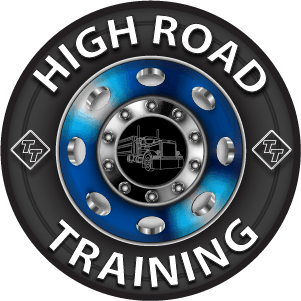Note: Your are not logged in. We can not keep your scores or track your progress unless you Register and Log In
Loading and Securing Paper Rolls with Eyes Horizontal (continued)
Requirements for eyes lengthwise: prevent movement
-
Direction of Potential Movement: Forward
Methods to Prevent Movement:
- Vehicle structure
- Other cargo
- Blocking
- Tie-downs
-
Direction of Potential Movement: Rearward
Methods to Prevent Movement:
- Other cargo
- Blocking
- Fiction mats
- Tie-downs
-
Direction of Potential Movement: Side - to - Side
Methods to Prevent Movement:
- Vehicle wall
- Other cargo
- Chocks, wedges, or blocking of adequate size
Note: Chocks, Wedges, or Blocking Securing the Front or Rear Roll - Hold in place by some means in addition to friction so they cannot become unintentionally unfastened or loose while the vehicle is in transit. This is often accomplished with nails.
Requirements for eyes lengthwise: stacked loads
Do not load paper rolls in an upper layer if another roll will fit in the layer beneath.
Form an upper layer by placing the paper rolls in the wells formed by the rolls beneath.
Eyes lengthwise: prevent forward and rearward movement
Secure a roll in an upper layer against forward and rearward movement:
- Either by any of the means required for the bottom layer.
- Or by using a blocking roll.
- Or by banding it to other rolls.
Special Circumstances: Loading and Securing Paper Rolls on a Flatbed Vehicle or a Curtain-Sided Vehicle
Requirements for eyes vertical or with eyes horizontal and lengthwise
Load and secure the paper rolls as described for a sided vehicle.
Attach tie-downs to secure the entire load according to the general cargo securement requirements in Section 2.
Note: Stacked loads of paper rolls with eyes vertical are prohibited
Requirements for eyes crosswise
Prevent each roll from rolling or shifting forward and rearward by:
- Contact with the vehicle structure.
- Contact with other cargo.
- Chocks, wedges, blocking or bracing of adequate size.
- Tie-downs
- Use side-to-side or front-to-back tie-downs to prevent side-to-side movement.
Note: Chocks, wedges, and blocking must be held in place by some additional means to friction so they may not become unfastened or loose while the vehicle is in transit.
Multiple-Choice Questions:
To secure paper rolls with eyes horizontal against rearward movement, you can use which of the following except:
- The vehicle wall.
- Friction mats.
- Blocking.
- Other cargo.
Direction of Potential Movement: Rearward
Methods to Prevent Movement:
- Other cargo
- Blocking
- Fiction mats
- Tiedowns
When securing paper rolls on a flatbed or curtainside vehicle, it is acceptable to stack rolls with eyes vertical:
- When using tiedowns that wrap twice around the load.
- Stacking rolls with eyes vertical is not acceptable
- When temperature is 63 degrees F or more.
- When total weight is less than 5,000 lbs.
Special Circumstances: Loading and Securing Paper Rolls on a Flatbed Vehicle or a Curtain-Sided Vehicle
Requirements for eyes vertical or with eyes horizontal and lengthwise
Load and secure the paper rolls as described for a sided vehicle.
Attach tiedowns to secure entire load according to the general cargo securement requirements in Section 2.
Note: Stacked loads of paper rolls with eyes vertical are prohibited
Complete!
You can Return To The Table Of Contents







 TT On Facebook
TT On Facebook